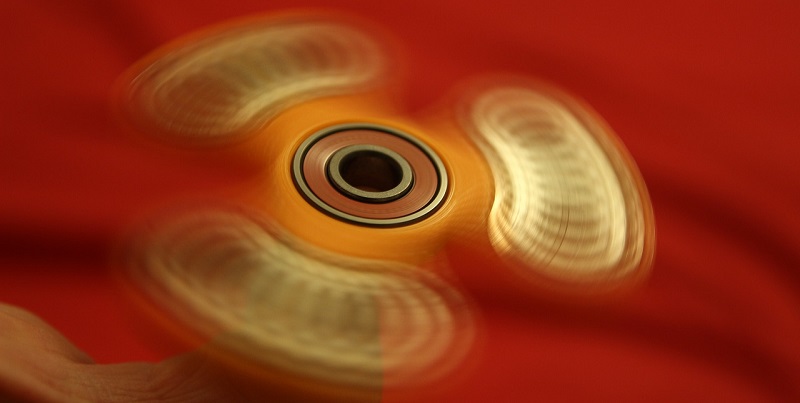
30 Apr Learn About Science by Making a Fidget Spinner
Fidget spinners, the small, wheel-like devices that quickly spin in your hand with a flick of your finger, have become insanely popular. People of all ages, but especially school-aged kids, love them.
The fidget spinner became so ubiquitous on the playground and in the classroom that some teachers and administrators have even considered banning them at school.
However, these trending toys might be more at home in the classroom than teachers guessed. With the right approach, they can teach kids about science. Physics, engineering, the scientific method and even a little biology can all be taught more effectively with the integration of a fidget spinner.
Plus, with many tutorials available on the internet, fidget spinners can also be easy and fun to make. These are great activities for rainy spring and summer days, when playing outside is not an option.
Fidget Spinner Physics
Kids can get a great, hands-on example of Newton’s laws of motion with a fidget spinner. Here are just a few concepts you can discuss:
Inertia
This is the property of matter “by which it continues in its existing state of rest or uniform motion in a straight line unless that state is changed by an external force.” Without any force applied to the spinner, there’s no way it can spin. It continues to spin, seemingly forever. That’s because friction is required to slow it down, and the spinners are build to minimize friction.
Torque
Torque is, simply, rotational force — and fidget spinners need it to work. This educator’s blog summarizes: “Torque depends on the magnitude of the applied force, how far from the rotation axis the force is applied, and how much of the force is perpendicular to the arm of the spinner. You’ll need to push it with a lot of oomph as far from the center as possible, and at least slightly in the direction you want it to spin.”
Velocity
Discuss how the spinner’s rotational velocity remains steady until another force acts upon it. In this case, the forces that slow down the spinner are gravity and friction.
Friction
Friction is the resistance that objects encounter as they move against other surfaces. If possible, you can look inside the fidget spinner or get another example to see how a ball bearing works by reducing friction. The balls inside a ball bearing allowing the pieces of the wheel to roll instead of slide, which helps it spin longer.
The Scientific Method and Data Gathering
A fidget spinner is as good as on opportunity as any for kids to run science experiments, just as they would for any other lab test or science fair project.
They can design and run experiments about which types of spinners rotate the longest. They can isolate variables to see how those variables affect the spins. The spinners’ number of prongs, prong shape, spin location, and ball bearing type all great variables to test and discuss.
This teacher offers printable templates for fidget spinner experiments and other spinner-based classroom activities.
Science of Color and Light
This science teacher had the great idea of connecting spinners to the concepts of color and light.
As you watch a fidget spinner spin, you see colors combine to make new colors. You even see patterns, circles or other optical illusions.
These spinners tangibly illustrate topics such as light wavelengths. You can even discuss how the eye works to send visual signals that the brain has to interpret.
Design and Engineering
There is a multitude of tutorials available on making new spinners. Hands-on projects such as fidget spinner design can tie all the concepts about physics and color together and teach kids a little about building, too.
Here are just a few of the materials you can use:
LEGO
LEGO is one of the most popular toys around, so many kids already have the materials on hand. This post lists several LEGO spinner tutorial options. No hot glue or soldering required!
3D Printers
Many kids have access to a 3D printer at their school or library. Introduce them to this technology by making a fidget spinner like this maker did.
Cardboard
You don’t even need toys or a fancy machine to make a spinner. A used cardboard box and some hot glue can do the trick. Here is one tutorial that doesn’t even require a ball bearing.
Strike while the trend is hot. Choose a material and get spinning. Even during summer vacation, your child could be eagerly learning and discussing scientific concepts. How’s that for a win-win?
PHOTO: Pixel Creatures / CC0 Public Domain




No Comments